From mild purple bell peppers to spicy purple ghost peppers, we’re covering heat levels, origins, and uses in this comprehensive guide to types of purple peppers!
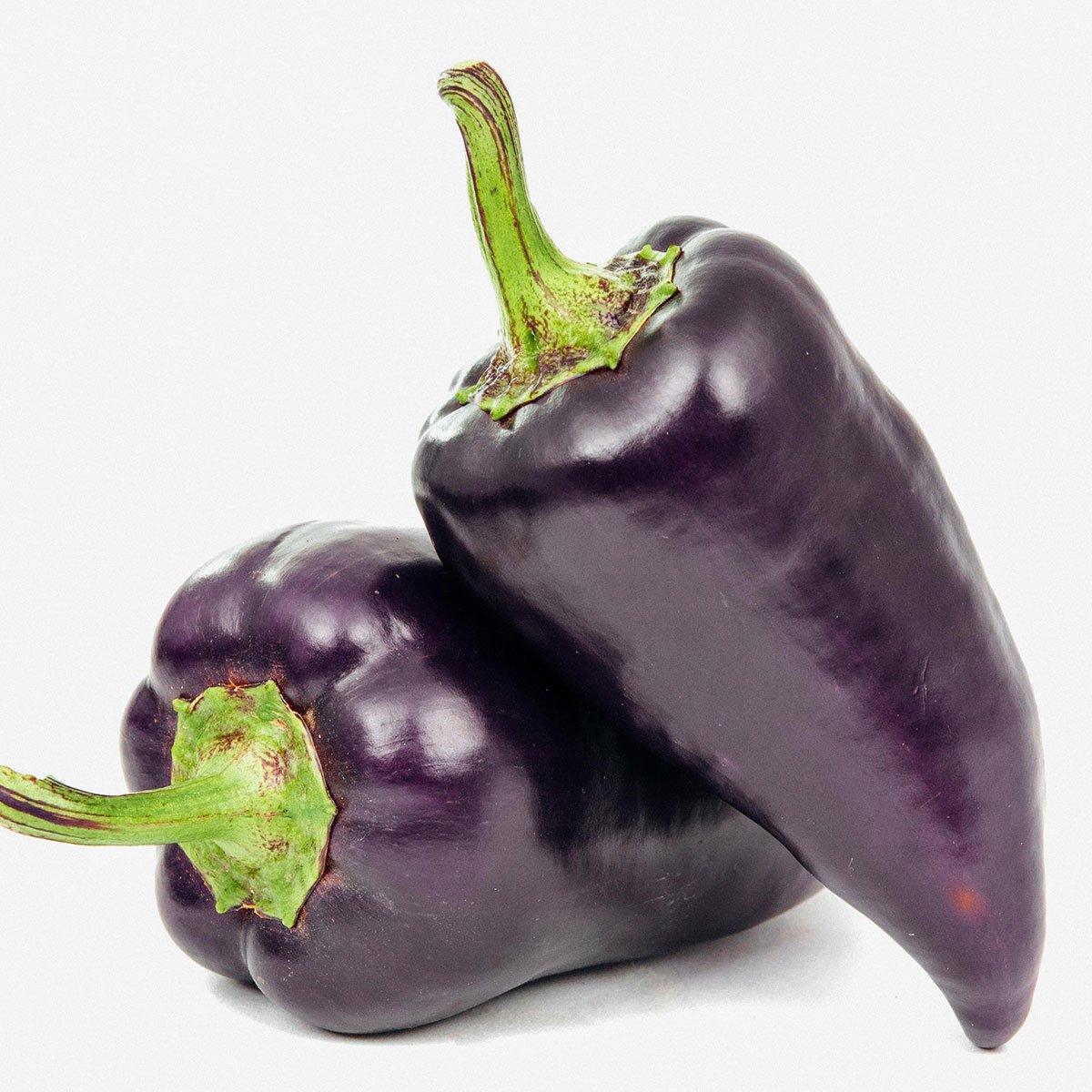
Today we’re taking a look through 15 types of purple peppers, from those with no heat to a few that go off the “OMG pass me that milk now!” scale. We will go in order of mild to hot, and will use the standardly accepted Scoville Heat Unit Scale (SHU) to rank these beauties and beasts.
Oh, and if you want more on all sorts of other popular peppers (mostly hot!) check out our 29 Types of Peppers Guide.
Are purple peppers healthy?
Purple peppers have the added health benefit of containing anthocyanins (the compound that gives peppers their purple color). These are powerful antioxidants that help protect cells from free radical damage and are said to support both heart and brain health.
Are purple peppers natural?
Yes, purple peppers are naturally occurring, though some varieties were developed as hybrids of other peppers to achieve the aesthetically pleasing purple hue.
What Is The Scoville Heat Unit Scale?
The Scoville heat unit scale rates how spicy peppers are. The rating was devised by an American pharmacist Wilbur Scoville in 1912. The Scoville Heat Unit (SHU) scale allows you to have an idea of how comparatively hot one is versus another. Bell Peppers start at zero. The familiar jalapeno will land somewhere between 2,500 and 8,000. Typically peppers you can get at the grocery won’t go higher than 500,000, but in specialty markets and through special order you can go well beyond this as the scale goes to 16 million.
Types of Purple Peppers
While there are hundreds of varieties of peppers in the world, they aren’t all purple! Here are the most common types of purple peppers, listed from least to most spicy.
- Purple Bell Peppers or Purple Beauty Peppers
- Purple Marconi Pepper
- Murasaki Purple Pepper
- Pasilla Peppers
- Purple Jalapeno Pepper
- Mr. Purple Hot Pepper
- Purple Prince Pepper
- Purple Tiger Pepper
- Purple Cluster Pepper
- Peruvian Purple Pepper
- Purple UFO Peppers
- Bolivian Rainbow Hot Pepper
- Purple Cayenne Pepper
- Purple Habanero Pepper
- Purple Bhut Jolokia Ghost Pepper
Purple Bell Peppers or Purple Beauty Peppers
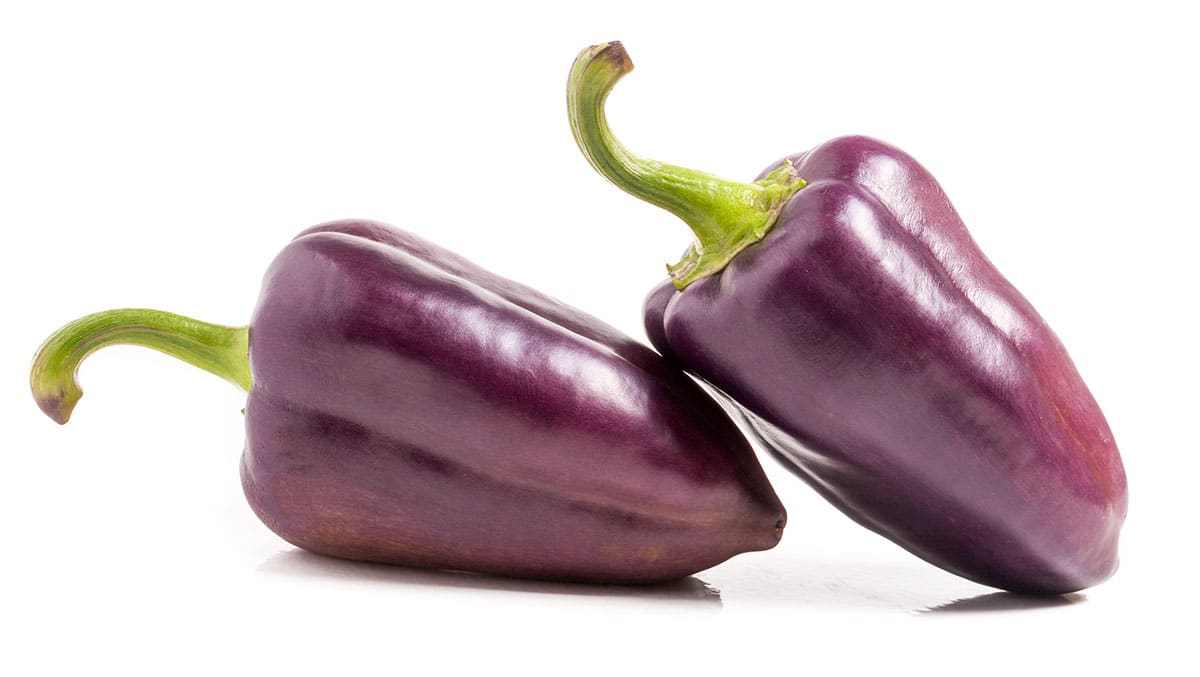
SHU Rating: 0
Appearance: Also known as Purple Beauty Peppers, the purple bell pepper is a colorful variation of the common bell pepper, which is typically green, red, yellow, or orange, but can also be found in brown and white. The purple bell pepper has a deep purple color, both on the outside and inside.
Flavor: It has a mild and sweet flavor, similar to other bell peppers, but with a slightly fruity undertone. Like all bell peppers, the purple variety is not at all hot earning it a SHU rating of zero. The purple bell pepper can be used in salads, stir-fries, stuffed dishes, or as a raw snack.
Purple Marconi Pepper
SHU Rating: 0
Appearance: The Purple Marconi pepper is a sweet pepper variety with a long and tapered shape. It is named after the Italian sweet pepper known as, you guessed it, “Marconi” The purple Marconi pepper has a deep purple color when mature, and its flesh is thick, crisp, and sweet.
Flavor: This large pepper can grow to as much as 6” and is a good candidate for stuffing. Give them a try in our Enchilada Quinoa Stuffed Peppers. Marconi’s can also be eaten raw in salads, grilled, roasted, or used in various cooked dishes. The pepper is known for its rich flavor and versatility in the kitchen.
Murasaki Purple Pepper
SHU Rating: 0 to 1,000
Appearance: Murasaki Purple Pepper is a variety of sweet pepper originating from Japan. “Murasaki” means purple in Japanese, indicating the pepper’s vibrant purple color. It has a blocky shape and thick flesh, similar to bell peppers.
Flavor: The Murasaki Purple Pepper has a sweet and slightly tangy flavor and is normally crunchy making it suitable for eating raw, roasting, grilling, or using in stir-fries. It adds visual appeal to dishes with its distinctive purple hue. They can be almost black, but have a contrasting green interior. In Japan these peppers are popular for their ornamental value as well as culinary possibilities.
Pasilla Peppers
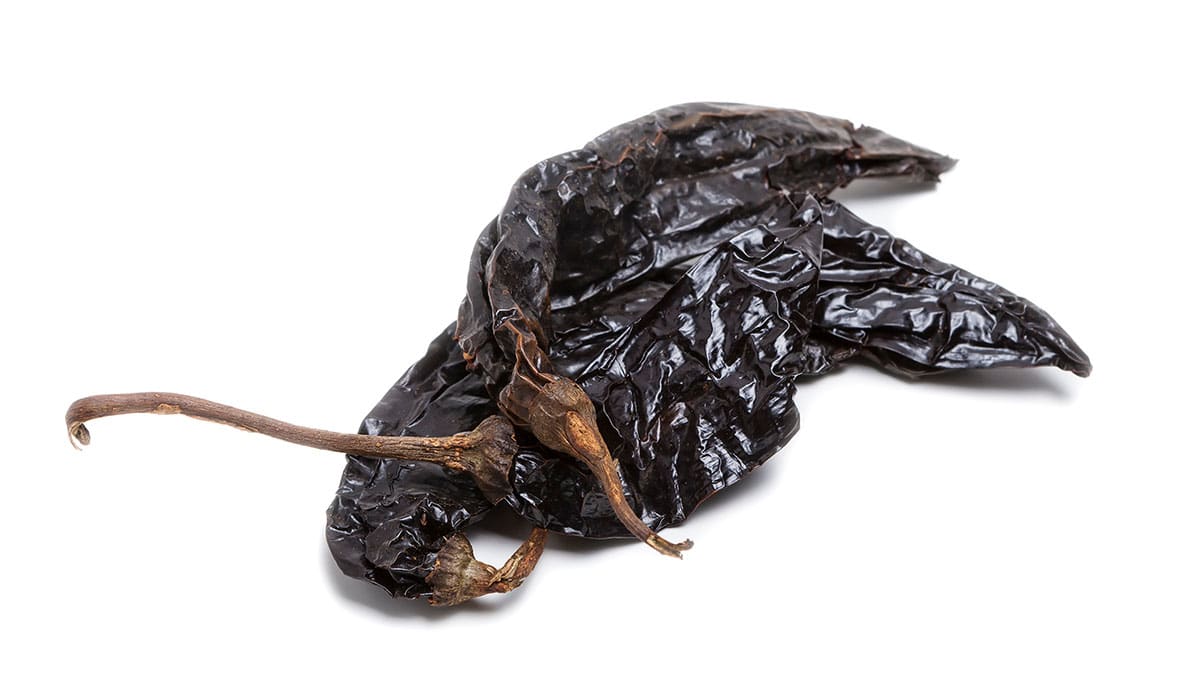
SHU Rating: 1,000 to 2,500
Appearance: Okay, these peppers from Northern Mexico are borderline purple and that not all the time, but many of the other peppers in this article are only purple as they transition to red or green. Their name translates into dried raisin which is an apt name for them.
Flavor: They are often used in salsa, mole sauce, chili rellenos, and ground into seasoning powder. They are also often used in lieu of Poblano peppers.
Purple Jalapeno Pepper
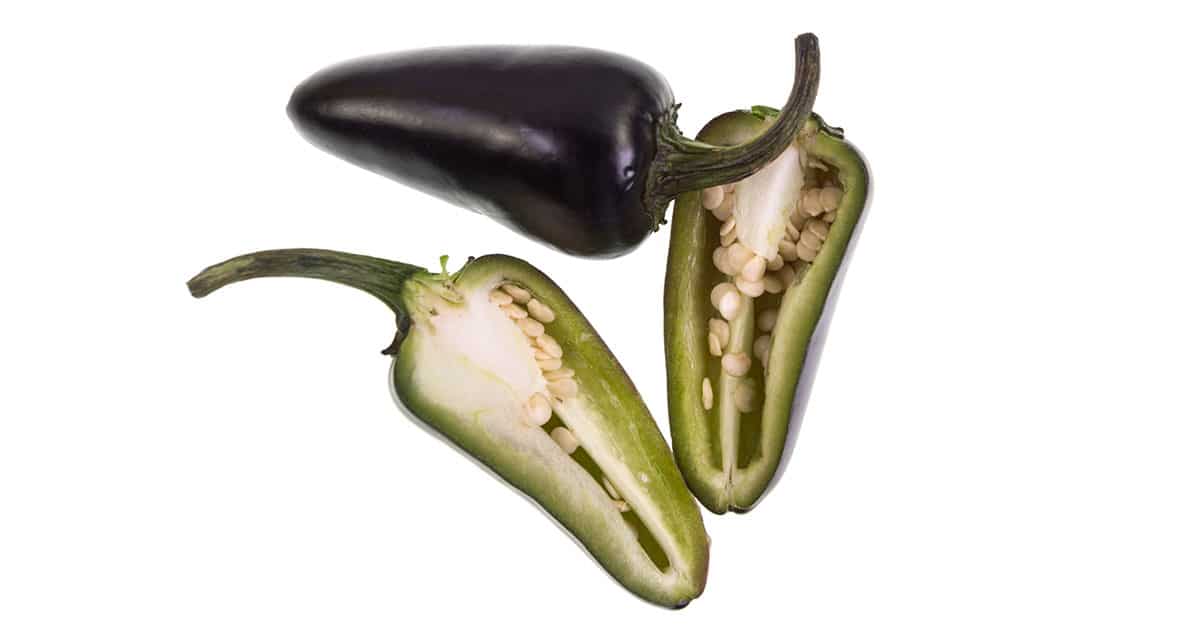
SHU Rating: 2,000 to 8,000 (non-purple jalapeños range from 1,000 to 8,000)
Appearance: Purple jalapeno peppers are a variation of the popular jalapeno pepper, known for its spiciness. The purple jalapeno has a dark purple color prior to ripening, and gradually turns to red as it matures.
Flavor: It has a similar heat level to traditional green jalapenos but with a slightly sweeter and fruitier flavor. Purple jalapenos can be used in a variety of dishes, salsas, pickling, sauces, or as a spicy topping.
Mr. Purple Hot Pepper
SHU Rating: 3,000 to 25,000
Appearance: Mr. Purple Hot Pepper is a variety of hot pepper known for its vibrant purple color. It is a hybrid pepper that combines the heat of traditional hot peppers with a unique purple hue.
Flavor: The pepper typically has a medium to high level of spiciness, similar to other hot peppers like jalapenos or serranos. It can be used in various culinary applications, including salsas, hot sauces, and as a spicy ingredient in dishes. Often considered an ornamental pepper, they are also great in the kitchen and can get hot enough for pepper eating contests. Well perhaps the first round of a contest.
Purple Prince Pepper
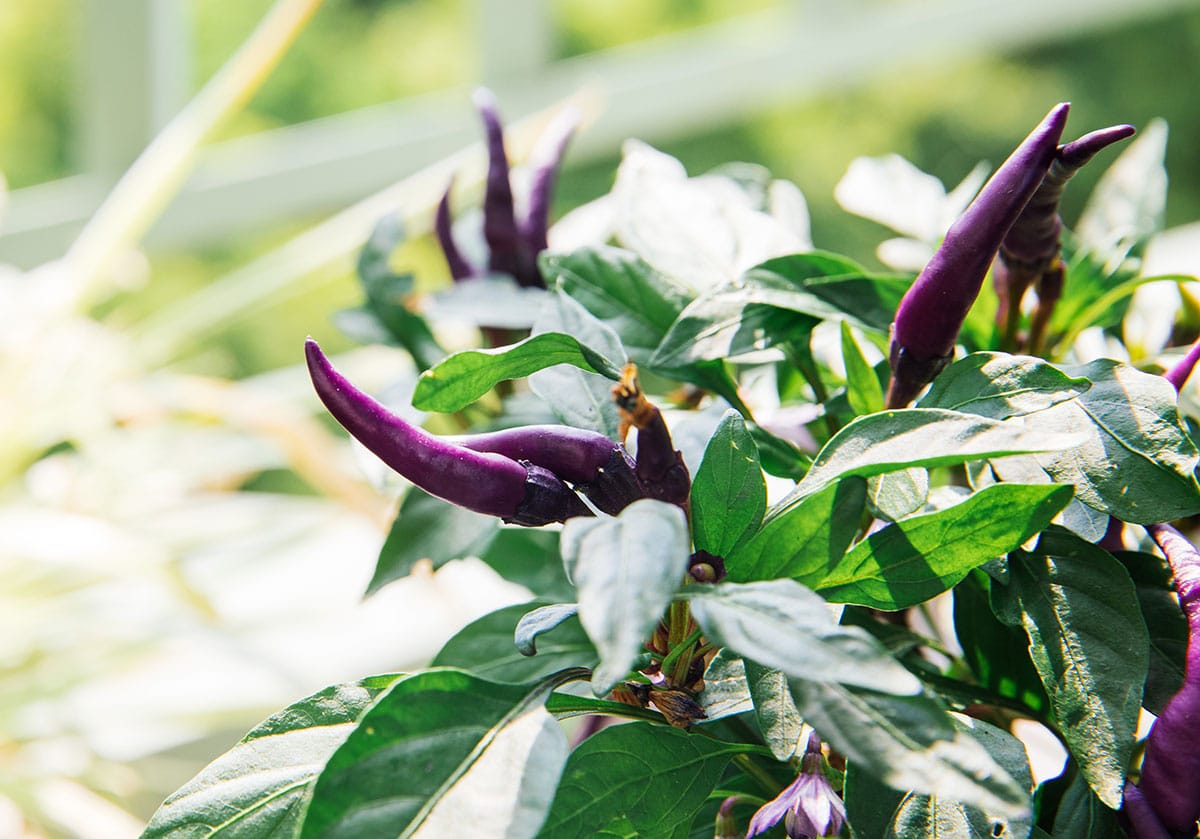
SHU Rating: 4,000 to 10,000
Appearance: Purple Prince Peppers are another variety with an aesthetic purple hue. They are typically small to medium-sized peppers that mature to a vibrant purple color. Purple Prince Peppers have a slightly elongated shape and a thinner skin compared to say Purple Beauty Peppers.
Flavor: They have a mild to moderate heat level, adding a subtle kick to dishes without being overly spicy. These peppers are often used in salsas, sauces, stir-fries, and as a decorative element in salads.
Purple Tiger Pepper
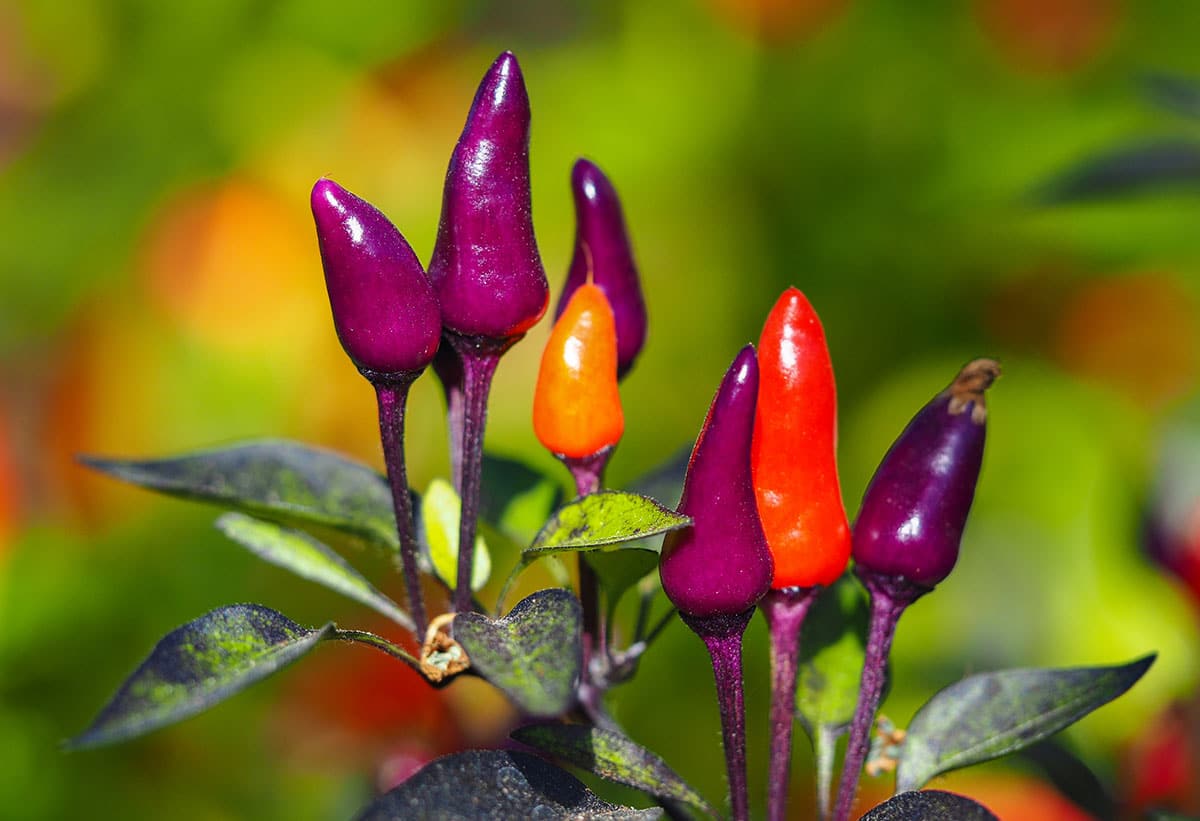
SHU Rating: 4,000 to 11,000
Appearance: The Purple Tiger Pepper is an ornamental hot pepper variety. It is known for its small, elongated fruits that ripen from green to purple, and finally to red. The peppers have a spicy flavor and are often used for decorative purposes due to their striking appearance.
These are also known as pretty purple peppers due to its gorgeous purple fruit, leaves, and stems. While the purple prince plant may be small, growing just 2 feet (60cm) tall, it produces an impressive yield of crisp and spicy peppers.
You might consider adding a plant to your garden this summer. As the plant matures, the peppers will turn orange and then crimson red. The purple prince is truly charming and compact enough for a small balcony.
Purple Cluster Pepper
SHU Rating: 5,000 to 30,000
Appearance: Purple Cluster Peppers, as the name suggests, grow in clusters on the plant. They are usually small to medium-sized peppers with a slender, elongated shape. These peppers also have a deep purple color when fully ripe.
Flavor: Purple Cluster Peppers tend to have a slightly hotter flavor compared to Purple Beauty Peppers. They can be used in a variety of culinary applications, such as pickling, grilling, stuffing, or just to add a pop of color to dishes.
Peruvian Purple Pepper
SHU Rating: 12,000 to 30,000
Appearance: The Peruvian Pepper, also known as the Rocoto Pepper, is a hot pepper native to the Andean region of South America, particularly Peru. It is a small to medium-sized pepper with a round shape and a wrinkled skin. Peruvian peppers come in different colors, including purple, red, orange, and yellow.
Flavor: They are known for their intense heat, and are often described as fruity and smoky. Peruvian peppers are commonly used in Peruvian cuisine to add spice to sauces, stews, and traditional dishes
Purple UFO Peppers
SHU Rating: 30,000 to 45,000 (though some sources claim they can go well beyond 100,000)
Appearance: The Purple UFO Pepper is an ornamental pepper variety known for its unique appearance. It gets its name from the shape of its fruits, which resemble flying saucers or UFOs. We think they look more like a toddler’s toy top, but we will go with the cool official name. The peppers start off green and eventually mature into a deep purple color. They are small and often grown only ornamentally due to their intense heat level.
Bolivian Rainbow Hot Pepper
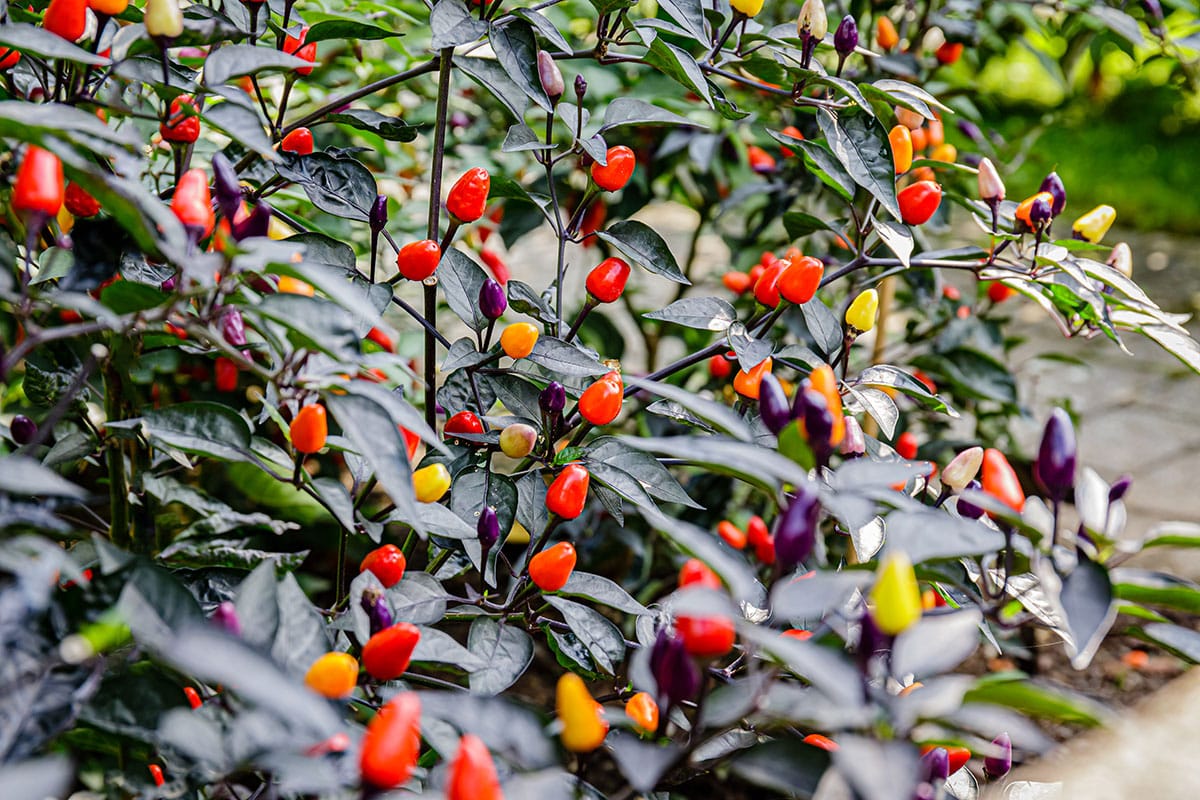
SHU Rating: 30,000 to 50,000
Appearance: The Bolivian Rainbow Hot Pepper is a small, ornamental chili pepper variety. It is named for its vibrant colors, which include purple, yellow, orange, and red. Their name actually came as a reference to the Bolivian flag.
Purple Cayenne Pepper
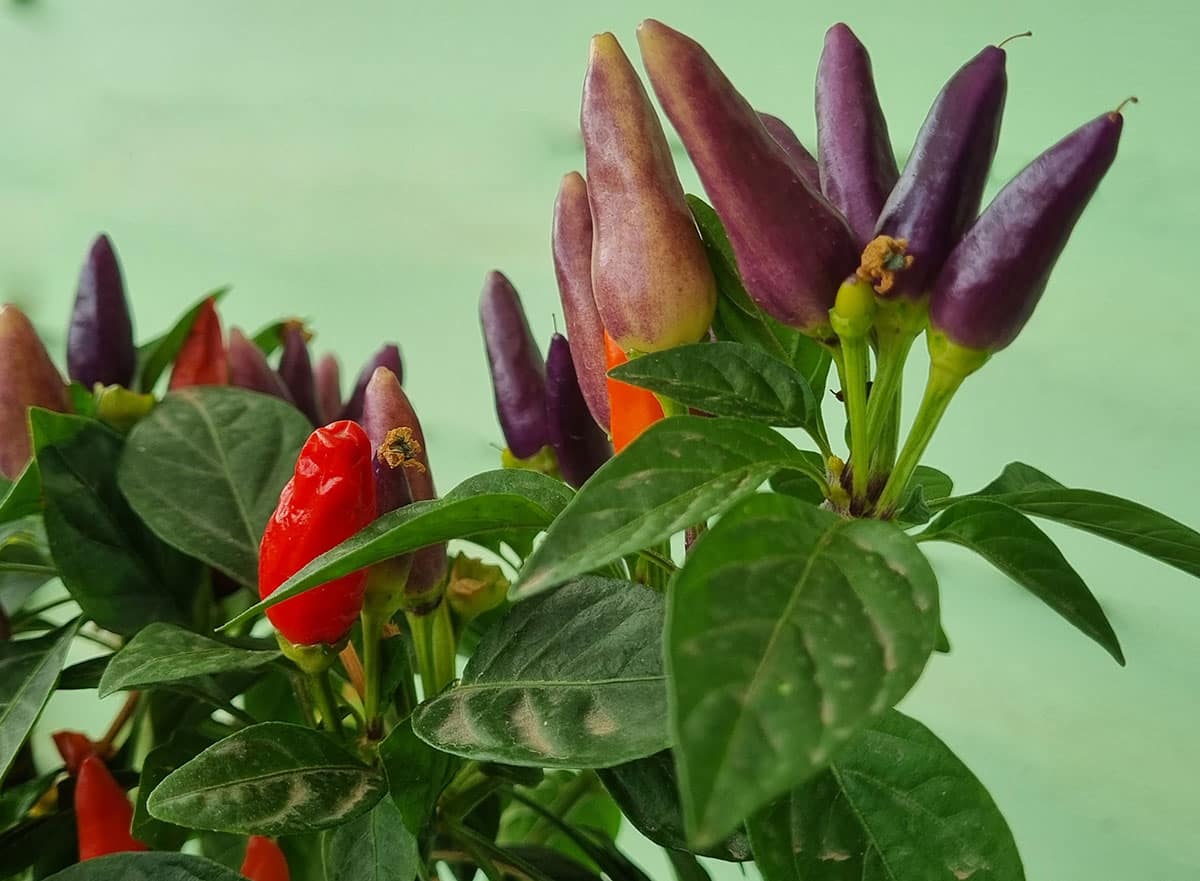
SHU Rating: 35,000 to 50,000
Appearance: The Purple Cayenne Pepper is a variation of the traditional cayenne pepper. It has a dark purple color that stands out from the typical bright red color of cayenne peppers. Cayenne peppers are getting to that “OMG where is the milk?” level of hot. They are usually red or green and popular throughout North and South America.
Flavor: They are most commonly ground into a dried spice or into chili flakes which is the form you will generally find them in at the grocery. Most hot sauces sold in the United States use cayenne pepper. Finding purple cayenne peppers might be a bit difficult, but specialty or international markets may be a good place to search. Purple cayenne peppers are often used to add spiciness to various dishes and sauces.
Purple Habanero Pepper
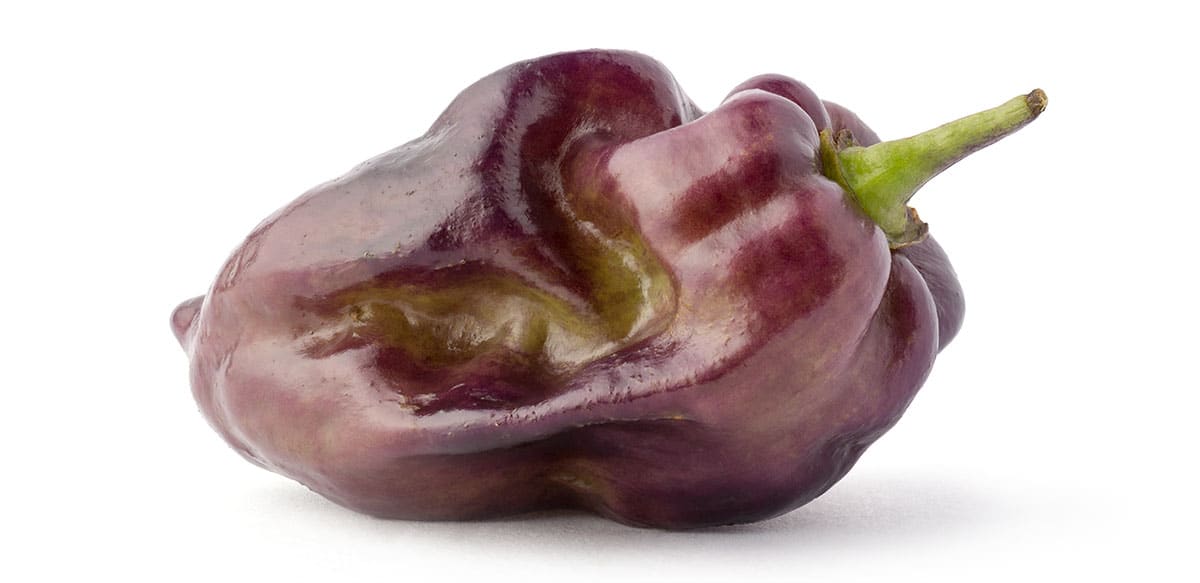
SHU Rating: 100,000 to 350,000
Appearance: The Purple Habanero Pepper is a variety of the habanero pepper known for its intense heat and fruity flavor. As the name suggests, it has a vibrant purple color that distinguishes it from traditional orange or red habanero peppers.
Habanero is sort of the gold standard for hot peppers against which others are compared. Often, for example, peppers are described as hotter than jalapenos, but not quite habanero hot. This makes sense as they are about the hottest pepper that is readily available. Habaneros grow in hot climates, and are an important crop in Mexico’s Yucatan.
Flavor: Habaneros are often stewed, fried, fermented, and used to make any recipe crazy hot. They are named after the Cuban city of Havana. They aren’t grown anywhere in Cuba, but Havana was long a trading center for such peppers. Purple habaneros are fairly rare and often grown at home by hot pepper enthusiasts, so if you can’t find them consider growing them yourself.
Purple Bhut Jolokia Ghost Pepper
SHU Rating: 850,000 to 1,450,00
Appearance: The Purple Ghost Pepper is a hot pepper variety that is a cross between the infamous Bhut Jolokia (Ghost Pepper) and a purple pepper variety. It inherits the extreme heat of the Bhut Jolokia and showcases a deep purple color.
Flavor: The Purple Ghost Pepper is known for its intense spiciness, and it is generally used sparingly in cooking sauces and spice blends.
Ghosts were once considered the hottest peppers in the world, so we are getting up there with the big boys now. They lost this status to the Trinidad Scorpion in 2011 and then in turn to the Carolina Reaper in 2013. It seems to us the best use for these is for dares and drinking games. There was, however, a report of a man who in 2016 ate a ghost pepper puree and then tore his esophagus while retching.
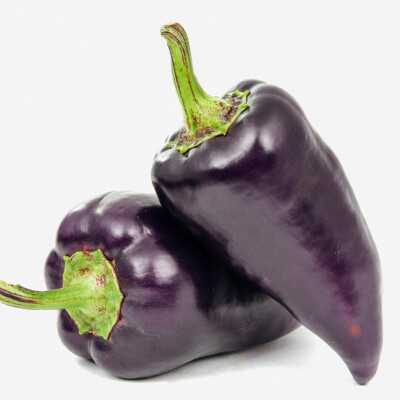
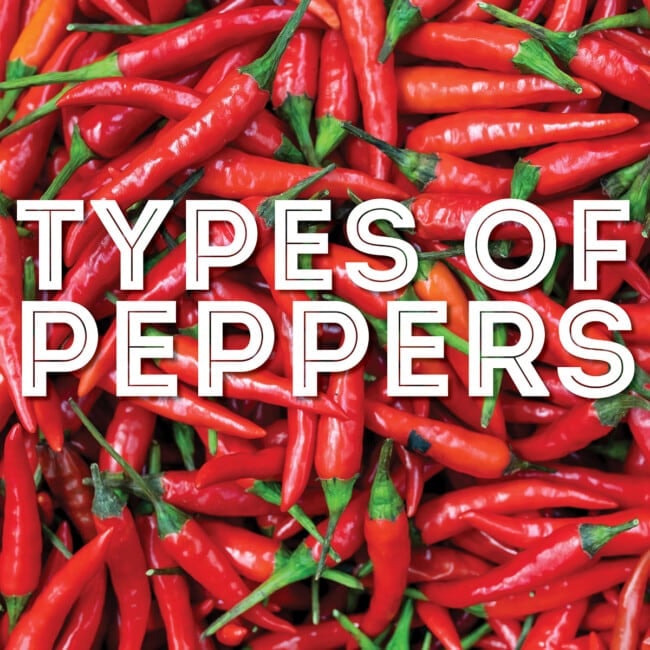
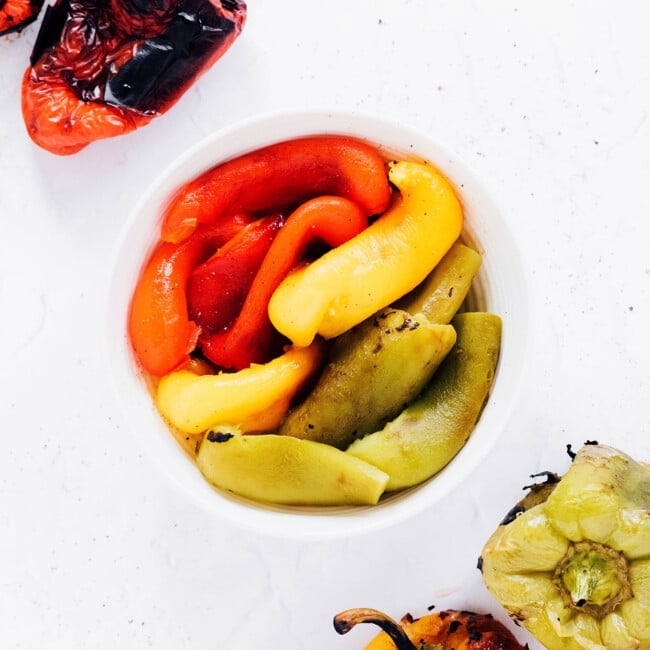
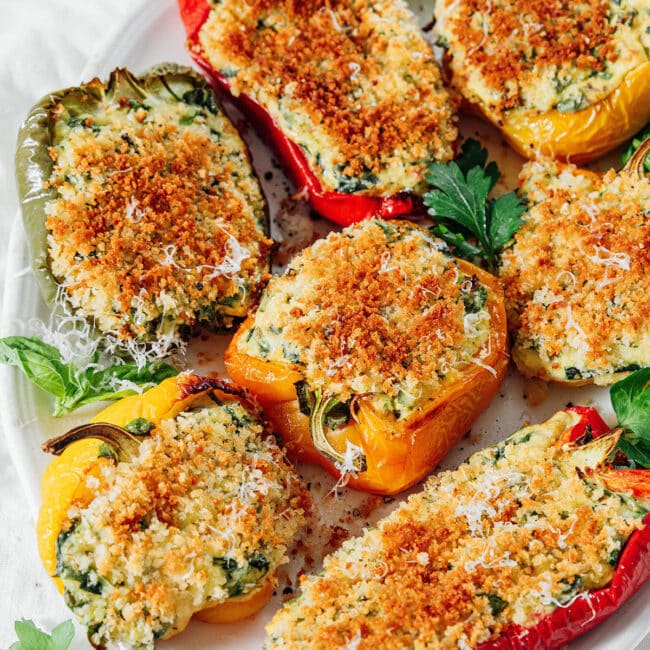
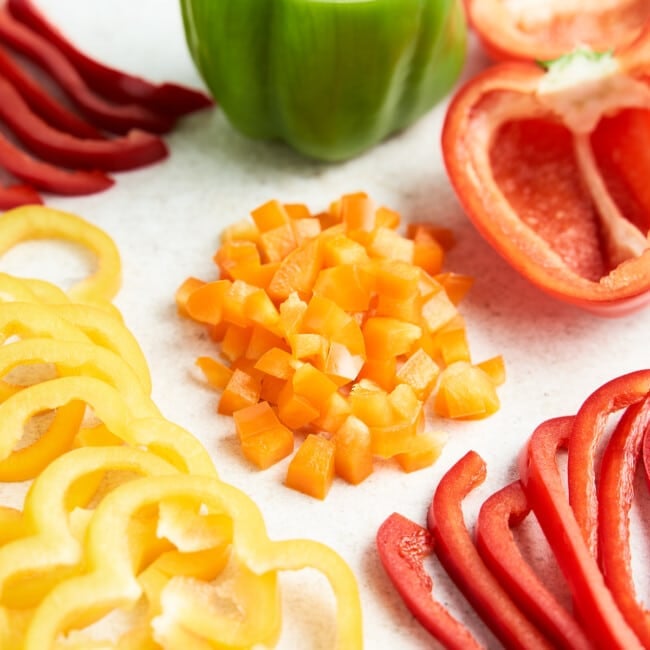
Angel says
The photo of your MURASAKI PURPLE PEPPER is an eggplant.
Sarah Bond says
Thanks for pointing that out, Angel!